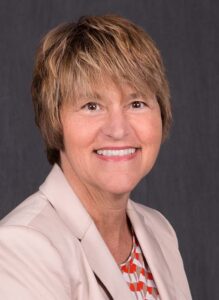By Deborah Jeanne Sergeant
For a patient struggling with a substance use problem, a stay in an inpatient facility may represent only part of the recovery process.
Not everyone begins at inpatient, said Kathleen Gaffney-Babb, executive vice president and chief operating officer of Helio Health in Syracuse.
“I think there are a lot of misunderstandings and stigma,” said Gaffney-Babb. “One is that treatment for substance use is ‘one-and-done.’ We don’t think of any other health situation like that, like diabetes: you go to your doctor and get insulin and eat right and expect the person to never need more care. We don’t do that with any other health conditions but substance use disorder. A lot of people think if you get treatment, you should be all better. That is a disservice to people in recovery to think that.”
Gaffney-Babb said that initially, patients may not need inpatient care, but outpatient treatment, meeting with a counselor weekly with medication.
Care begins with an assessment, looking at the patient’s functioning and needs. Providers take an integration approach: medication, nutrition, socialization, housing, employment and whatever else the person needs to achieve a healthy level of functioning.
“We’d look at their substance use history and what problems that has caused in their life,” Gaffney-Babb said. “We base their level of care on that assessment.”
For those who need inpatient care, the journey toward wellness may have only begun once their two to three weeks of inpatient care has ended. In some cases, a stay at a residency for three to four months may be in order and then treatment as an outpatient or at a halfway house for weeks afterwards.
Unfortunately, this may take several years and attempts at completing a treatment program, and the patient’s insurance coverage may not cover the necessary amount of treatment. At hundreds of dollars a day, it is not cost effective to keep people in inpatient programs for months or even several weeks. For certain patients with the right supports, that level of care is not even necessary. Insurance companies look at the individual’s ability to function independently and within the limits of their coverage pay for care based upon their function.
“Sometimes, incorrectly, insurance companies may look at the number of days instead of functioning,” Gaffney-Babb said. “The provider needs to advocate for their care.”
In addition to services offered by Helio, the organization can refer patients to outside care that can help support the patient’s recovery.
Most insurers do not cover inpatient care unless lower levels of care have not been tried first. During inpatient stays, patients develop a plan for their follow-up treatment to increase their chances of success. This can include finding housing, a local therapist, group meetings or a sponsor.
For patients forced to go to inpatient treatment by a family member or judge, treatment likely will not progress to success.
Gaffney-Babb said that preparing for discharge is important because patients must eventually go back to the world where they used substances. If they do not enact changes in themselves first, they will likely begin using again.
As with patients at Helio Health, patients at Cazenovia Recovery in Buffalo also develop a discharge plan and receive referrals before they leave inpatient treatment.
“As soon as they come, we ask about their plans after discharge and how can we support those plans,” said Edward Cichon, director of marketing and communications for Cazenovia Recovery. “They have a structure set up for referrals and they feel supported and empowered so they make good choices when they leave us.”
This includes referrals to an intensive outpatient program and housing. While dictating what patients should do next may seem a good idea, Cazenovia Recovery has found that working with patients to develop their plans works better than telling them what to do next in their recovery process.
A sense of support and community is also necessary for patients’ success. That is why Cazenovia works with patients’ families.
“Family involvement is huge,” said Angela Angora, director of reintegration. “By having family members come in, we can have expectations about when this person can leave.”


